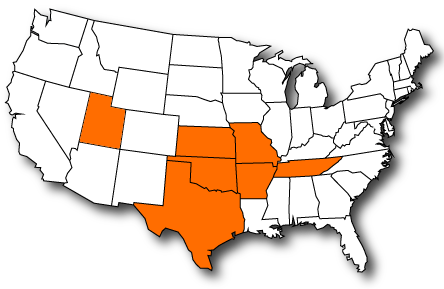Accidents can happen to anyone at any time, and when they do, having the right auto insurance coverage is crucial to protecting yourself and your financial well-being. If you’re a resident of Tulsa, Oklahoma, and you find yourself involved in a car accident, it’s essential to know how to file an auto insurance claim properly. This comprehensive guide will walk you through the steps you need to take to ensure a smooth and successful claims process.
Step 1: Ensure Safety
Before you think about filing an auto insurance claim, your priority should always be safety. Immediately after the accident, move your vehicle to a safe location to prevent further accidents or damage. Turn on your hazard lights, and if you have them, set out warning triangles or flares to alert other drivers to the accident scene.
Next, check for injuries, both in your vehicle and in the other involved vehicles. If there are injuries, call 911 immediately to request medical assistance. Safety should always come first.
Step 2: Gather Information
Once the scene is secure, it’s time to start collecting essential information for your auto insurance claim:
Driver Information: Exchange contact information, insurance details, and driver’s license numbers with the other party involved in the accident. Be sure to note the make, model, and license plate number of their vehicle.
Witness Information: If there were any witnesses to the accident, gather their contact information as well. Their statements may be crucial in the claims process.
Police Report: If the police are called to the scene, request a copy of the accident report. It will provide an official account of the incident, which can be beneficial during the claims process.
Photos and Documentation: Take pictures of the accident scene, including damage to both vehicles, skid marks, road conditions, and traffic signs. Additionally, document any injuries and damage to personal property.
Step 3: Contact Your Insurance Company
As soon as you can, contact your auto insurance company to report the accident. Be prepared to provide them with the information you’ve collected, including the details of the accident, the other party’s information, and any witness statements or police reports.
Your insurance company will guide you through the process and explain the next steps. They will likely assign an adjuster to your case to assess the damages and work with the other party’s insurance company if applicable.
Step 4: Follow Your Insurance Company’s Instructions
Your insurance company will provide you with specific instructions for filing your auto insurance claim. This may involve filling out a claim form or providing additional documentation. Be sure to follow these instructions carefully to expedite the claims process.
If your insurance policy includes coverage for a rental car, your insurer will help you arrange for a rental vehicle while your car is being repaired.
Step 5: Assessing the Damage
Once your insurance company has all the necessary information, they will assess the damage to your vehicle and, if applicable, the other party’s vehicle. The adjuster will determine the cost of repairs or the value of your car if it’s deemed a total loss.
Keep in mind that the process may take some time, so be patient. Your insurance company’s goal is to provide a fair and accurate settlement based on the terms of your policy.
Step 6: Repairing Your Vehicle
If your vehicle is repairable, your insurance company will either recommend an auto body shop or allow you to choose one. They will work directly with the repair shop to cover the cost of repairs, including parts and labor.
It’s essential to ensure that the chosen repair shop is reputable and has a history of providing quality service. Review their estimates, ask about warranties, and keep the lines of communication open with both the repair shop and your insurance company.
Step 7: Settling the Claim
Once your insurance company has all the necessary information and has assessed the damage, they will offer you a settlement. This may include covering the cost of repairs, reimbursement for medical expenses (if applicable), or compensation for property damage.
Review the settlement offer carefully and make sure it aligns with your policy’s terms. If you have any questions or concerns, don’t hesitate to discuss them with your insurance adjuster.
Step 8: Resolving Disputes
Sometimes, you and your insurance company may not agree on the settlement amount or coverage. If this happens, you can try to resolve the dispute through negotiation or mediation. If these methods fail, you may consult an attorney to pursue legal action.
Step 9: Closing the Claim
Once the claim is settled and all parties are satisfied, the insurance company will close the claim. You should receive written confirmation of the claim’s closure, and your insurance rates may be adjusted based on the outcome of the claim.
Step 10: Learn from the Experience
After the claim is resolved, take the time to reflect on the accident and consider what you can do to avoid similar situations in the future. This might include reviewing your coverage, improving your driving habits, or seeking additional safety measures for your vehicle.
In Tulsa, Oklahoma, as in any other location, filing an auto insurance claim can be complex and sometimes stressful. However, understanding the steps and being prepared can make it significantly more manageable. Always prioritize safety, follow the guidance of your insurance company, and remember that accidents happen, but having the right insurance coverage is there to protect you when they do.
Ready to start your auto insurance claim in Tulsa, OK? Don’t hesitate to contact our experienced insurance experts for personalized guidance. Call us now!


